Jepsen testing
This page describes Jepsen tests that YugabyteDB runs daily for each major release currently available.
Scenarios
Bank
This test simulates money transfer between accounts; it uses a table T with schema (id int PRIMARY KEY, balance bigint). The workload performs transactional transfers between accounts - (UPDATE Tbalance = balance - x WHERE id = ?; UPDATE T SET balance = balance + x WHERE id = ?;)as well as reads of the whole table. The grand total is expected to remain the same, both in short and long term.
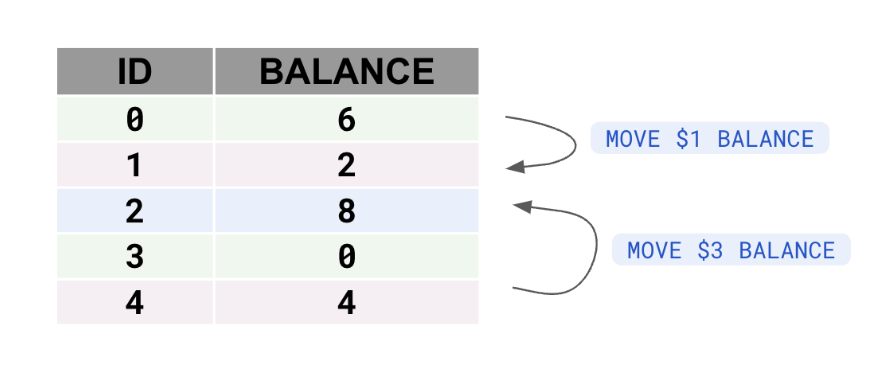
BEGIN TXN;
UPDATE T SET balance = balance + x WHERE id = ?;
UPDATE T SET balance = balance - x WHERE id = ?;
COMMIT;
Bank-contention (YSQL)
In addition to UPDATE transactions, there are also INSERT or INSERT/DELETE transactions, all operating under the assumption that the overall SUM(balance) must remain consistent. To simplify Jepsen's scenario, the test uses 5 keys for UPDATEs and 5 for random INSERTs and DELETEs.
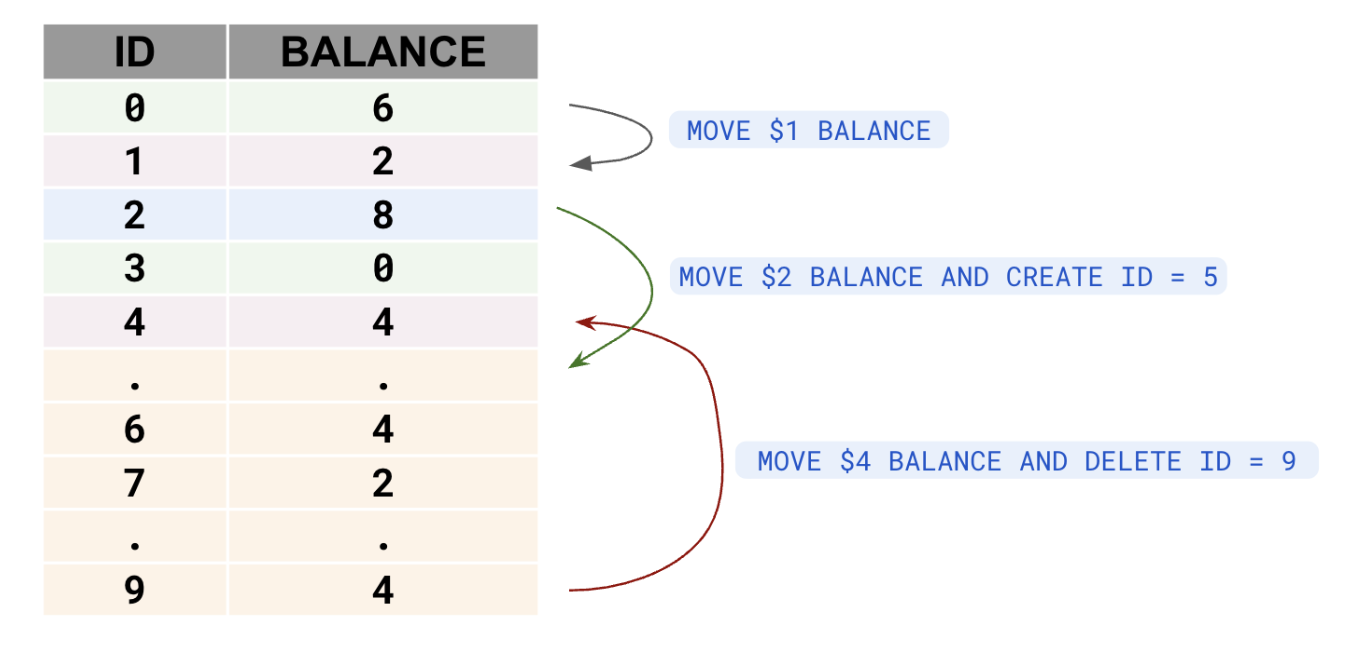
-- updates
BEGIN TXN;
UPDATE T SET balance = balance + x WHERE id = ?;
UPDATE T SET balance = balance - x WHERE id = ?;
COMMIT;
-- inserts
BEGIN TXN;
INSERT INTO T (id, balance) VALUES (?, ?);
UPDATE T SET balance = balance - x WHERE id = ?;
COMMIT;
-- deletes
BEGIN TXN;
SELECT balance FROM T WHERE id = ?;
UPDATE T SET balance = balance + x WHERE id = ?;
DELETE FROM T WHERE id = ?;
COMMIT;
Counter
This test uses a table T with schema (id int PRIMARY KEY, count int) with a single row, with the workload consisting of concurrent increments (UPDATE T SET count = count + ? WHERE id = 0) and reads. At any given time the value column is expected to be not more than the number of increments issued, and not less than the number of increments succeeded.
The test utilizes the int column type for YSQL and counter type for YCQL.

Set
This test uses a table T with schema (id int PRIMARY KEY, val int, grp int). Concurrently, values are inserted into this table while simultaneously reading the entire table. After an insert operation succeeds, or when an element is first observed in a read operation (whichever occurs first), all subsequent reads are expected to include that inserted element.
For YCQL, the table also includes a count column, and the workload permits duplicate inserts.
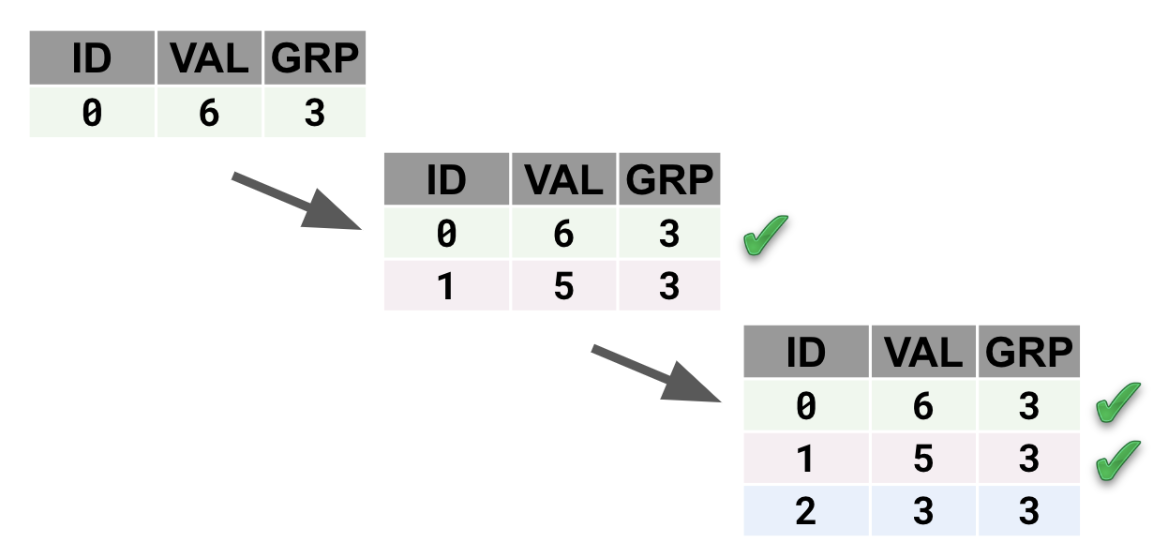
INSERT INTO T (id, val, grp) VALUES (?, ?, ?);
SELECT val FROM T where id = 0;
Long fork
The long-fork test uses a table T with schema (key int PRIMARY KEY, key2 int, val int), where individual workers execute either single-row inserts or perform multi-row reads. The expectation is that the read results are serializable. This means that for two write operations, W1 and W2, it should not be possible for a read operation R1 to observe write W1 but not W2, while another read operation R2 observes W2 but not W1.
For more information, see Jespen tests documentation.
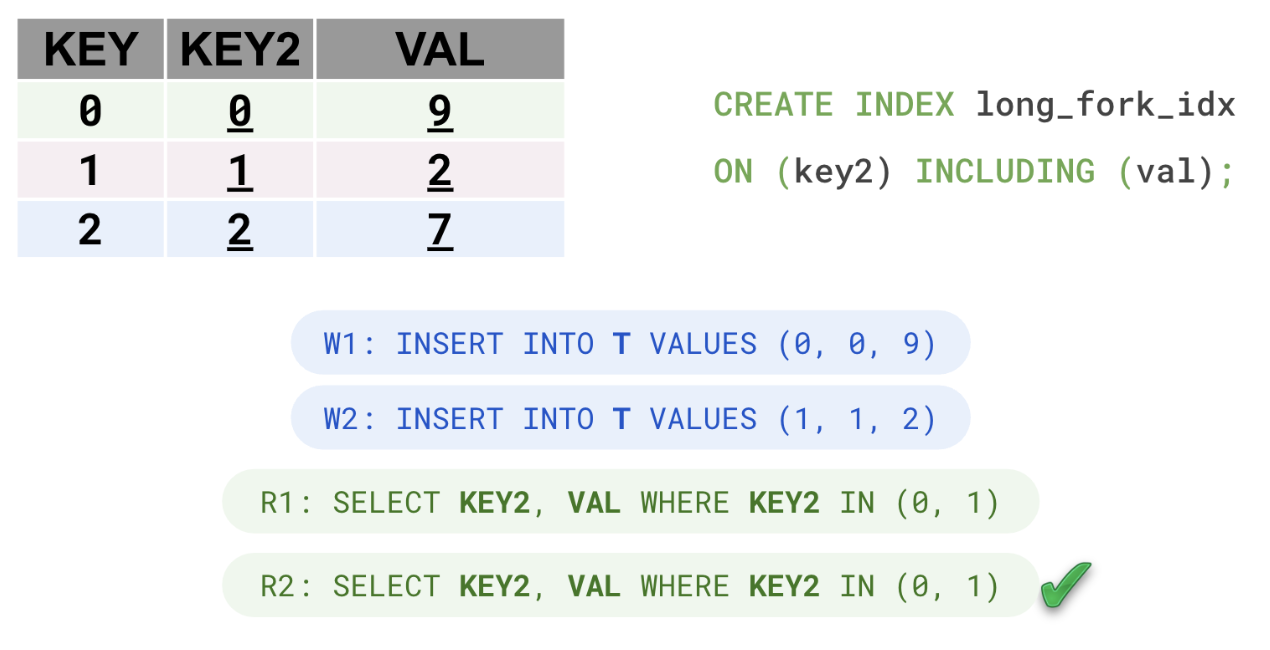
Default value
This scenario entails concurrent Data Definition Language (DDL) and Data Manipulation Language (DML) operations, simulating a migration scenario. Typically, DEFAULT 0 column is added to ensure that it is actually zero and not null when performing inserts and reads.

Single Key ACID
The test uses a table T with schema (id int PRIMARY KEY, val int) with a fixed number of rows, each row having several worker threads assigned to it. Each worker can either read the row, update the row, or perform compare-and-set UPDATE T SET val = ? WHERE id = ? AND val = ?; worker groups for different rows are completely independent of each other. Checker makes sure that the resulting operations history is linearizable, that is, reads observe previous writes and writes don't disappear.
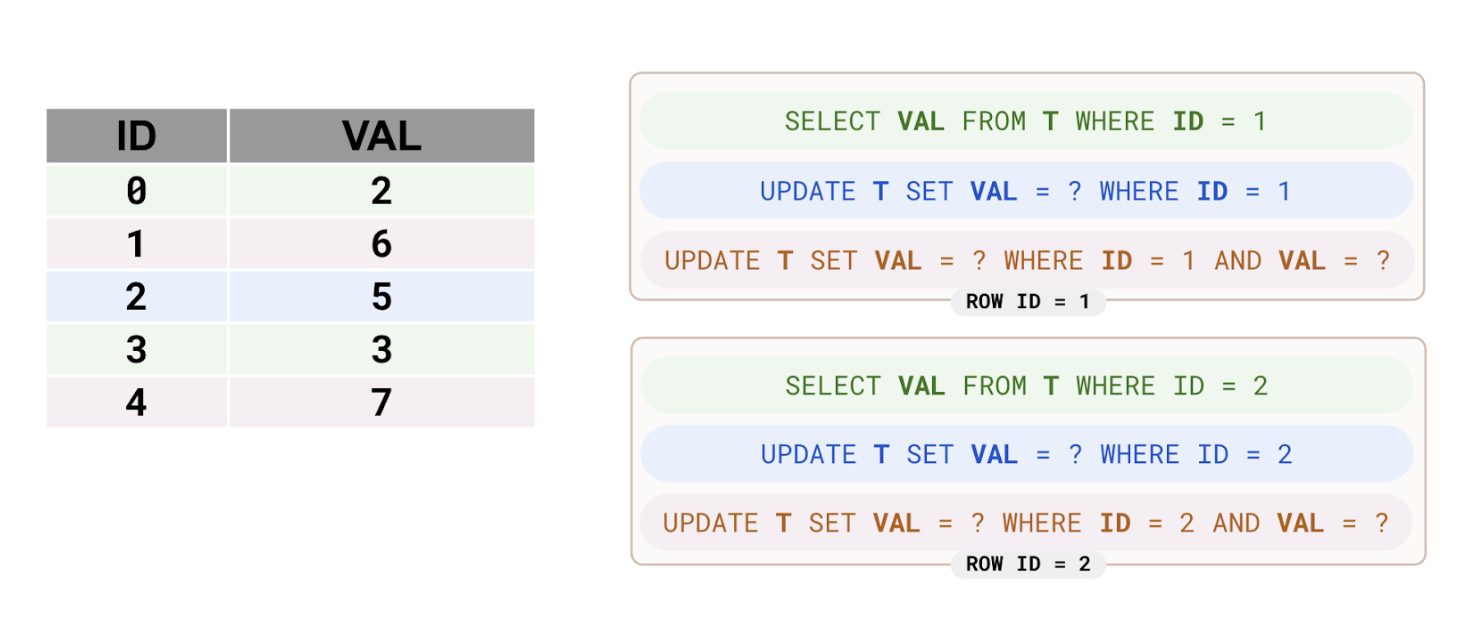
Multi Key ACID
This test is similar to the single-key ACID test, but uses a composite primary key on table T with schema (k1 int, k2 int, val int, PRIMARY KEY (k1, k2)) and UPSERTs (for YSQL it is INSERT .. ON CONFLICT DO UPDATE SET) instead of compare-and-set.
INSERT INTO T VALUES (k1, k2, val) ON CONFLICT DO UPDATE SET val = ?;
SELECT k1, value FROM T where k2 = ? and k1 = ?;
Append
In addition to a usual integer primary key, the table schema for this test uses a few text columns that hold comma-separated integers. Workers perform small transactions - a mix of concatenated updates like (UPDATE T SET txt = CONCAT(txt, ',', ?) WHERE id = ?) and single-row reads. It then verifies the history, looking for various serializable isolation anomalies (these are complex and are abbreviated as G0, G1, and G2; see Generalized Isolation Level Definitions).
Unlike other tests, this one uses several identical tables rather than just one. For more information about this test, see CMU Quarantine Tech Talks: Black-box Isolation Checking with Elle (Kyle Kingsbury, Jepsen.io).
The tests utilize geo-partitioning, different row-level locking modes, and all isolation types currently supported in YugabyteDB.

Nemesis
During the daily testing, an LXC configuration is used with a 5-node setup. The original nemesis list is not significantly expanded, except for the inclusion of clock skew by default during the initialization of yb-tserver/yb-master processes. VM nemeses (AWS VM restart/start/stop, volume detach) and some stress OS level nemeses (using stress-ng, network slowdown) are covered in YugabyteDB stress framework.
The complete nemeses list includes the following:
Software clock skew
YugabyteDB has special flag options that can utilize software clock skew. This nemesis assigns random clock skew values to each yb-tserver or yb-master process in scenarios where process restart is used.
Restart yb-master or yb-tserver process
Nemesis uses the ps utility to identify yb-master or yb-tserver processes, and then use the kill -9 command to forcefully stop and restart them.
Pause yb-master or yb-tserver process
Instead of killing the process, a STOP signal is sent to it, which may lead to tricky behavior between node interactions using the same kill utility as before.
Network partitioning
This nemesis uses the iptables utility to drop connectivity between testing nodes.
# drop connection from current node to 10.20.30.40,10.20,30.41
iptables -A INPUT -s 10.20.30.40,10.20,30.41 -j DROP -w
# heal everything
iptables -F -w
iptables -X -w
Combination of Kill, Partition, and Pause Nemeses
The following illustration describes an example of how nemeses work in combination during the test. Notice that there is some space for no nemesis so the test can execute and achieve some successful operations (txn ok). The test fails (txn fail) if an additional check shows that the number of write or read operations is zero.

Known issues
All latest information about issues related to Jepsen are tracked in our GitHub issues.